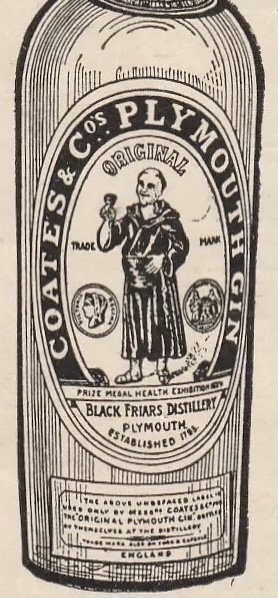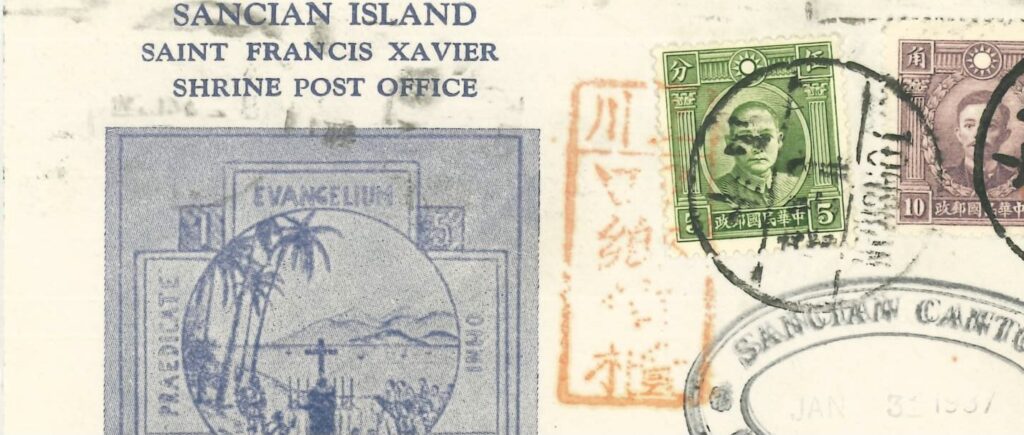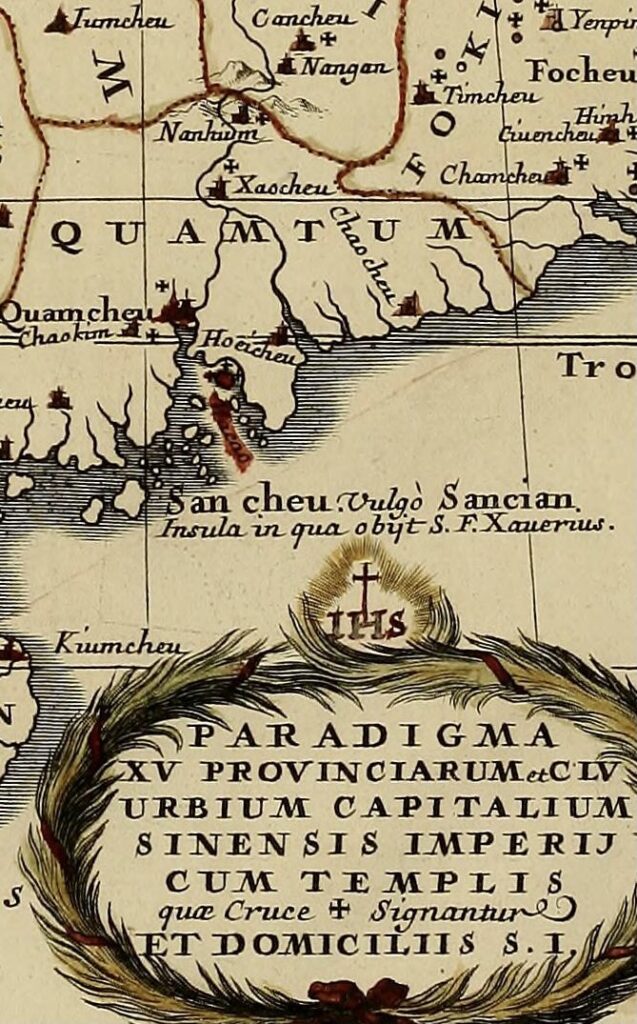It is often acknowledged that Jorge Álvares was the first Portuguese to have landed in China. In 1513, his ships arrived in a place known as Tamão, whose exact location is still controversial. The Portuguese met more obstacles in establishing regular trade relations with China than in India and Southeast Asia due to the heavy resistance of the Chinese emperor against foreigners. Therefore, between the first visit in 1513 and the settlement in Macau in 1557, the Portuguese had to find new trading posts from time to time, one of which was Sancian Island 上川島.
Sancian Island (Portuguese: Ilha Sanchoão, Ilha São João; English: Sanchoan, St. John’s Island; Cantonese: soeng6 cyun1 dou2; Putonghua: shàngchuān dǎo) is currently under the administration of Taishan of Jiangmen, Guangdong province 廣東江門市台山市. Today, the island is famous for its long natural beaches. However, four centuries ago, the island entered the world stage because of the Jesuit missionary Saint Francis Xavier 聖方濟各 or 聖方濟.
Saint Francis Xavier (1506–1552) was born in Navarre, Spain. In 1540, he co-founded the Society of Jesus (or the Jesuits), a religious order of priests and brothers. To the Portuguese empire, evangelization was as important as commercial gains in their Asian dominions. King of Portugal, therefore, appointed Francis Xavier to minister and preach to the people in the Eastern part of the world. Travelling on Portuguese ships, his evangelical activities mainly occurred in South and East Asia, particularly India, the Malay Archipelago, the Maluku Islands, and Japan, where he converted many non-believers to Christianity. Although China prohibited the entrance of foreigners at the time, he was hopeful about preaching the gospel to the Chinese. An opportunity came in September 1552 when Francis Xavier arrived at Sancian, an island located southwest of Macau. While waiting for his ship to continue his journey to mainland China, he fell ill and died on 3 December 1552 at the age of 46. Xavier’s body was first buried in Sancian, but it was later moved to Malacca. The remains of Xavier finally rested in the Basilica of Bom Jesus located in Goa, the capital of Portuguese India. A piece of Xavier’s arm bone has been kept in St. Joseph’s Seminary and Church in Macau. Saint Francis Xavier was canonized on 12 March 1622.
Map: IHS represents the first three letters of the name Jesus, which is spelt ΙΗΣΟΥΣ in Greek. The red mark above San cheu shows the name Macao.
Sancian Island remains an important pilgrimage site for Christians from all over the world. The present chapel which faces the sea was originally built in 1869 and a pyramid with a statue of Saint Francis Xavier was erected in 1877. A bilingual memorial stone dated 1639 and engraved in Chinese and Portuguese was placed on the tomb of the Saint.1
Plymouth is a port city located in the southwest of England. The name Plymouth also signals a key moment in British and American history. Four centuries ago, a group of passengers began their adventure on board the ship Mayflower, which set sail from the harbour of Plymouth, England. In September 1620, a group of 102 Puritans, also known as the Mayflower Pilgrims or Pilgrim Fathers, separated themselves from the Church of England and sought new lives in the New World. After a turbulent voyage across the Atlantic, the ship anchored at present-day Cape Cod in November 1620. With the help of the Indigenous Wampanoag, the Pilgrims established the Plymouth Colony, the first British colony in the USA. This historic event has been commemorated in different ways, one example is the Plymouth Gin, whose label shows the ship Mayflower.

Plymouth has been a traditional base for the British Royal Navy and the location-specific product Plymouth Gin was the beloved of the Royal Navy. Production of this gin began in 1793 in the Plymouth Gin Distillery, which is also known as the Black Friars Distillery because the building was a monastery in the 15th century. The premises are also said to be the meeting place of the Mayflower Pilgrims before they left for America.2 By the middle of the 19th century, Plymouth Gin supplied the Royal Navy with more than 1000 barrels per year of a gin of 57% abv known as the “Navy Strength”.3 Since the distillery was originally a monastery, a picture of a Dominican monk instead of the ship Mayflower was used on the label of the gin in the early days. In China, the gin was better known as Jossman gin. Jossman is a pidgin English term. Joss is derived from the Portuguese word Deus ‘God’, so joss man or joss pidgin man, where pidgin means ‘business’, refers to ‘monk, priest’. The term jossman gin probably originated from the China Station of the Royal Navy.4
Joss forms compound words with things or people related to religion, for example, joss house ‘temple’, joss pidgin ‘religious services’, joss stick ‘incense’, and joss paper ‘paper offerings’. Pidgin English was a common means of communication between the Chinese and foreigners to exchange ideas. So, would pidgin English be an effective way to preach? Well, you may judge for yourself after reading the passage below.5
First time have got two piecee, one piecee belong he one piecee belong she. Two piecee stop garden inside. Topside joss man talkee two piecee: ‘This side plenty thing can chow chow. Have got one piecee no can chow chow, suppose makee chow chow chop chop pay you makee die.’ Two piecee velly happy. No have got pidgin, whole time can makee play play; any time have got chow chow. By by no likee, by by wantchee chow chow all same fluit topside jossman have talkee no can chow chow.
Apparently, the passage is about the story of the “two piecee” – Adam and Eve in the Bible. Topside means ‘above, upstairs’. In this context, topside refers to ‘heaven’, so topside joss man is God. The sentences show different meanings of chow chow: as a verb meaning ‘to eat’ and a noun meaning ‘food’. Chop chop means ‘immediately’. By by comes from the English phrase by and by. There are two uses of the verb have got. In the sentence, No have got pidgin, have got indicates the usual possessive meaning of ‘have got’; whereas in First time have got two piecee, have got has an existential meaning, i.e. ‘there is’. In English, possession and existence are expressed by different verbs. However, the Cantonese verb 有 jau5 conveys both meanings – ‘have’ and ‘there is’.
1. Masson, Matthieu. 2019. Sancian: Landscape and architecture in the burial place of St. Franciis Xavier. Hong Kong Journal of Catholic Studies 10: Historiography of the Chinese Catholic Church: Historical Resources and Methodology, 173-222.
2. Plymouth Gin. https://plymouthdistillery.com/distillery
3. Solmonson, Lesley Jacobs. 2012. Gin: A Global History. London: Reaktion Books.
4. Jolly, Rick. 2019. Jackspeak. A Guide to British Naval Slang & Usage. Bloomsbury Publishing.
5. Crow, Carl. 1913. The Travelers’ Handbook for China. Shanghai: Hwa-Mei Book Concern.

